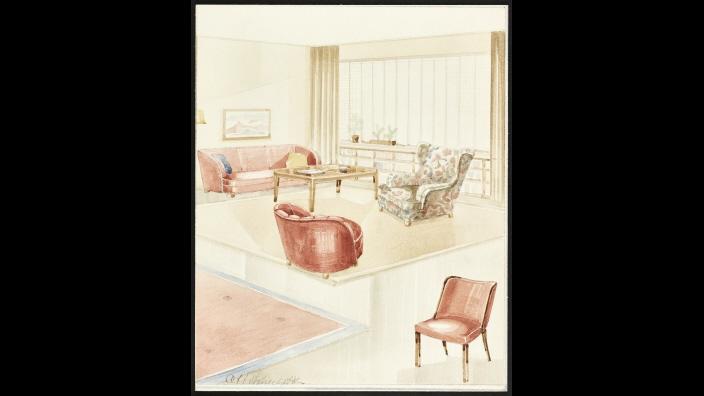Otto Schulz
a pair of easy chairs, Boet, Gothenburg 1940s.
Upholstered in a pink velvet textile, elm feet, height ca 70 cm, seat height ca 42 cm.
Later upholstery.
Provenance
Businessman Knut Hultén. Aquiered at Boet in Gothenburg during the 1940s
Literature
Compare, drawing from the Röhsska museum, archives.
Designer
Otto Schulz was a German-born designer and architect who spent the majority of his life working in Gothenburg, Sweden. In 1920, Schulz founded the company Boet together with Adolf Nordenberg, which became a highly influential interior and furniture manufacturer. Schulz's daring aesthetics have a multifaceted character that has contributed to important elements in both the Swedish Grace and Swedish Modern concepts. Schulz also published the magazine Boet, which, along with the store and business, helped to cement his role as central in interior design contexts. Some of Schulz's characteristics included developing techniques for which he took out patents, such as Bopoint, Bosaik, and Botarsia, all of which contributed to the furniture's distinctive aesthetics and quality.
Read more























































